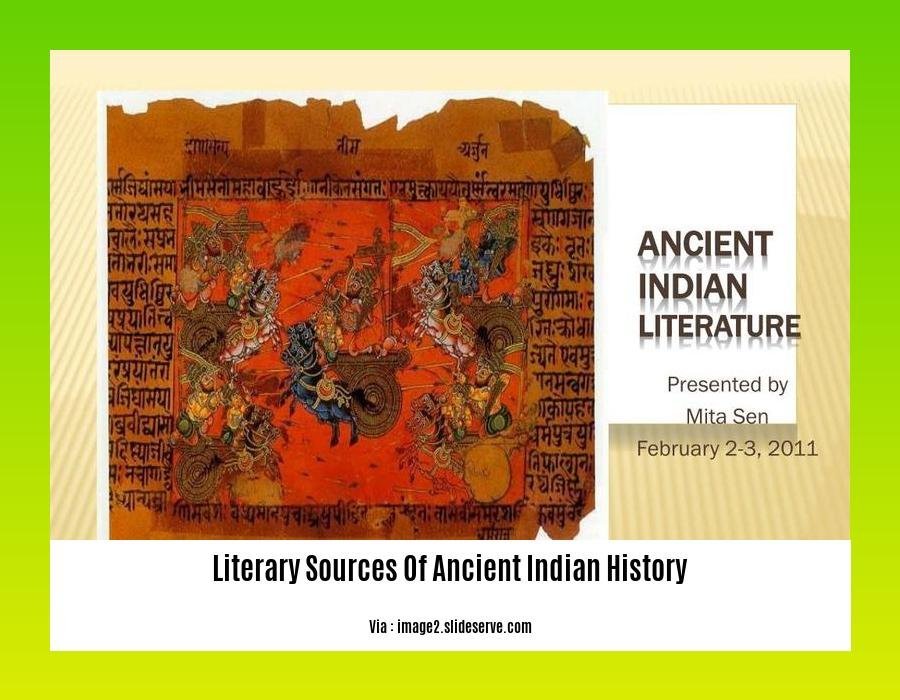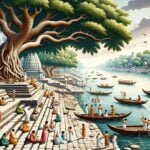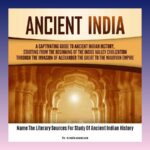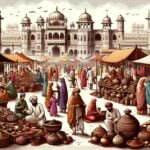Embark on a profound journey through time with our exploration of the literary sources that illuminate the ancient history of India. From sacred texts to epic tales, immerse yourself in the rich tapestry of civilizations, beliefs, and traditions that shaped one of the world’s oldest and most vibrant cultures. “Exploring the Literary Sources of Ancient Indian History: A Journey into the Past” unveils the profound insights embedded in these literary treasures, inviting you to unravel the mysteries of a bygone era.
Key Takeaways:
Vedas, Upanishads, and religious texts provide insights into hymns, rituals, and ancient Indian philosophy.
Epics like Ramayana and Mahabharata narrate legendary heroes and events.
Puranas and mythological texts offer genealogies, cosmologies, and historical accounts of rulers and dynasties.
Poetry, history, and biographies document the lives and deeds of rulers and notable figures.
Buddhist and Jain literature reflects teachings and doctrines of these religions.
Travel accounts by foreign visitors describe India’s geography, economy, and administration.
Literary Sources of Ancient Indian History
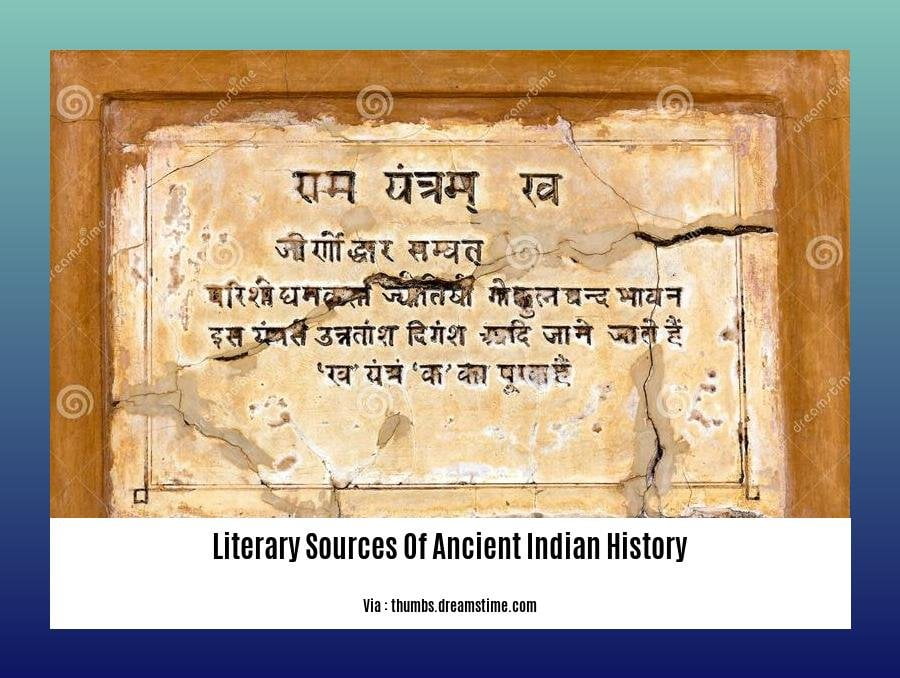
Ancient India’s captivating history is preserved through a wealth of literary sources, offering us a glimpse into the lives, beliefs, and achievements of this extraordinary civilization. These sources are invaluable for piecing together India’s rich tapestry, spanning empires, dynasties, cultural shifts, and spiritual awakenings.
Vedas and Upanishads: The Sacred Hymns and Philosophical Inquiries
The Vedas, ancient scriptures revered as the foundation of Hinduism, hold hymns, rituals, and philosophical contemplations that offer deep insights into the spiritual and intellectual pursuits of ancient Indians.
Complementing the Vedas are the Upanishads, profound philosophical texts that explore the nature of reality, consciousness, and the ultimate goal of human existence.
Epics: Tales of Valor, Love, and Dharma
Epics like the Ramayana and Mahabharata captivate us with their tales of legendary heroes, epic battles, and profound moral dilemmas. These epics serve as mirrors reflecting the social, cultural, and religious values of ancient India.
Puranas and Mythological Texts: Divine Narratives and Genealogies
The Puranas, a collection of extensive mythological texts, narrate the genealogies of kings, dynasties, and divine beings, intertwining history with myth. They offer glimpses into ancient India’s religious beliefs, rituals, and cosmological understandings.
Poets, Historians, and Biographers: Chronicling the Deeds of Greatness
Ancient India was home to gifted poets, historians, and biographers who left behind vivid accounts of the lives and deeds of rulers, personalities, and ordinary people. These works provide valuable insights into the political, social, and cultural landscapes of India’s past.
Buddhist and Jain Literature: Teachings of Wisdom and Enlightenment
The Buddhist and Jain traditions have contributed a wealth of literary sources, including sacred texts, commentaries, and biographical accounts. These sources illuminate the teachings of these religions, shedding light on their philosophies, ethics, and practices.
Travel Accounts: Observations from Foreign Eyes
Ancient India drew the attention of travelers from distant lands, leaving behind travelogues that offer unique perspectives on the geography, economy, administration, and cultural practices of the region. These accounts provide valuable insights from the eyes of outsiders, enriching our understanding of ancient India.
Stepping into the Past Through Ancient Indian Literature
These literary sources serve as gateways to ancient India, offering invaluable insights into the lives, beliefs, and achievements of its people. They transport us to a bygone era, allowing us to glimpse the grandeur of empires, the wisdom of philosophers, the triumphs of heroes, and the complexities of social structures.
As we delve into these literary treasures, we not only enrich our knowledge of ancient India but also gain a deeper appreciation for the enduring legacy of its people and culture.
To grasp the rich history of humanity through compelling narratives of key events, explore our comprehensive timeline of important events in ancient history timeline.
Dive into the bustling commercial centers of ancient India through our guide to important port city in ancient india, uncovering their pivotal roles in trade, cultural exchange, and the rise of empires.
Uncover the captivating world of theatrical performances in ancient Greece and the significance of masks in ancient greek theatre in shaping storytelling, characterization, and emotional engagement.
Epics: The two great epics of ancient India, the Mahabharata and the Ramayana, narrate heroic tales and offer valuable historical information.
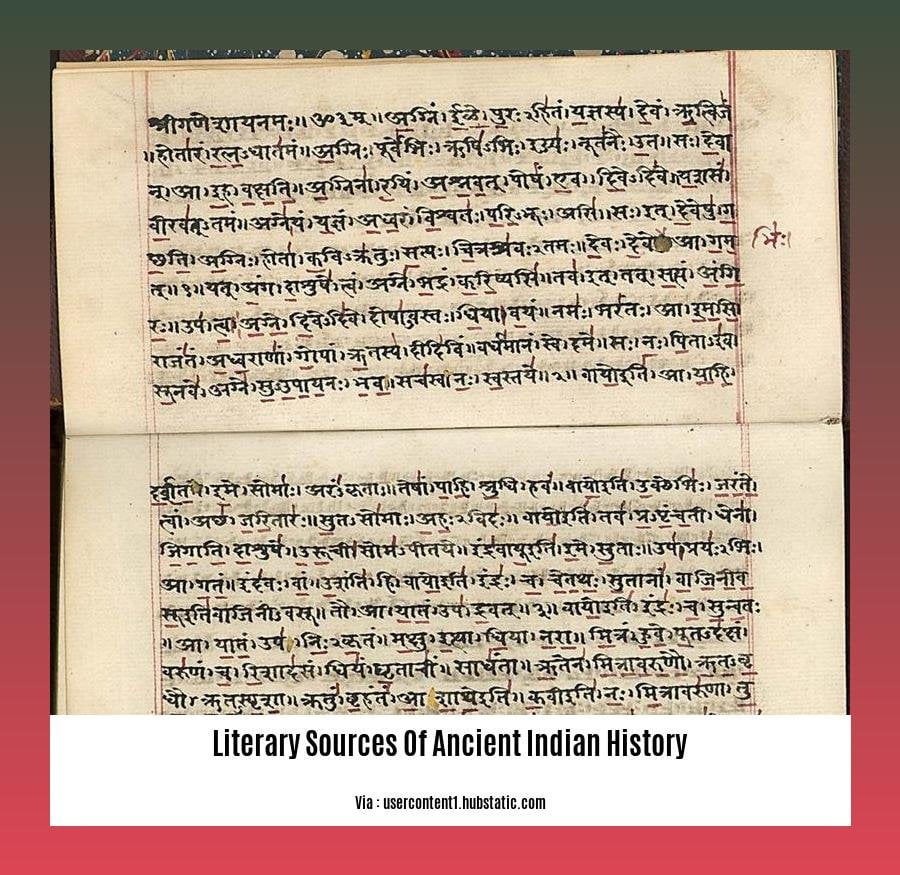
Ancient India’s rich history is replete with epic tales and captivating narratives that shed light on the lives, beliefs, and achievements of its people. Among them, the Mahabharata and Ramayana stand tall as literary pillars, weaving together myth, history, and cultural ethos. Join us as we delve into these epic masterpieces and explore their significance in understanding ancient India’s past.
Epic Tales of Valor and Wisdom
The Mahabharata and Ramayana are more than mere stories; they are mirrors reflecting the soul of ancient India. These epics narrate heroic quests, battles for righteousness, and profound philosophical teachings that continue to resonate today. They are journeys of self-discovery, love, honor, and sacrifice, capturing the essence of human existence.
Historical Insights from Mythic Narratives
While steeped in mythology, these epics are not entirely fictional. They are intertwined with historical events and provide valuable glimpses into ancient India’s political, social, and cultural landscapes. The Mahabharata is a treasure trove of information on ancient kingdoms, dynasties, and warfare strategies. The Ramayana offers insights into the lives of ordinary people, their customs, and beliefs.
Moral Lessons and Ethical Teachings
The Mahabharata and Ramayana are not just tales of valor and adventure; they are also reservoirs of moral lessons and ethical guidance. They explore themes of dharma (righteousness), karma (action and its consequences), and the eternal struggle between good and evil. These epics have shaped the moral compass of generations, influencing ethical conduct and societal values.
Cultural Tapestry of Ancient India
The Mahabharata and Ramayana are cultural kaleidoscopes, showcasing the diverse customs, traditions, and beliefs of ancient India. They offer insights into marriage rituals, funeral practices, and the role of women in society. These epics are windows into the vibrant cultural mosaic that characterized ancient India.
Key Takeaways:
The Mahabharata and Ramayana are two epic poems from ancient India known for their grandeur in scope and depth of content.
The Mahabharata tells the story of a royal family’s struggle for power, while the Ramayana narrates the journey of a prince who rescues his wife from a demon king.
Both epics are not just stories but offer valuable insights into the history, culture, and philosophy of ancient India.
They are considered sacred texts, revered and studied in various parts of the world, inspiring literature, art, and performing arts traditions across cultures.
The Mahabharata and Ramayana are testament to the creativity and storytelling prowess of ancient Indian civilization and continue to captivate audiences with their timeless tales and profound messages.
Citation
Buddhist and Jain texts: The scriptures and teachings of Buddhism and Jainism shed light on the religious and philosophical beliefs of ancient India.
In the tapestry of ancient Indian history, the threads of Buddhism and Jainism stand out, weaving together the spiritual and philosophical fabric of the subcontinent. Buddhist and Jain texts, like intricate tapestries, offer profound insights into the religious and philosophical beliefs of ancient India, inviting us on a journey of enlightenment and self-discovery.
Stepping into the World of Sacred Scriptures:
Both Buddhism and Jainism boast a rich literary heritage, encompassing a diverse range of texts that unveil their profound teachings. From the sacred canons to philosophical treatises, these texts serve as guiding lights, illuminating the path to spiritual liberation.
1. Buddhist Scriptures:
The Buddhist canon, known as the Tripitaka, is a vast treasury of wisdom, encompassing sutras, vinaya, and abhidharma. The sutras, like melodious chants, capture the teachings of the Buddha, guiding seekers on the path to enlightenment. The vinaya, a code of monastic conduct, provides a framework for ethical living, while the abhidharma delves into the profound depths of Buddhist philosophy.
2. Jain Scriptures:
Jainism’s sacred texts, collectively known as the Agamas, are a repository of knowledge and spiritual guidance. The Agamas encompass various categories, including sutras, which expound on Jain philosophy and ethics, and angas, which delve into topics such as cosmology, karma, and liberation.
A Tapestry of Religious and Philosophical Beliefs:
Through these sacred texts, we glimpse the kaleidoscope of religious and philosophical beliefs that shaped ancient India. Buddhism and Jainism, while distinct in their approaches, share a common thread of non-violence, compassion, and the pursuit of spiritual liberation.
1. Buddhism: The Path to Enlightenment:
Buddhism, founded by Gautama Buddha, emphasizes the concept of dukkha, or suffering, as an inherent part of existence. The path to liberation, according to Buddhist teachings, lies in following the Noble Eightfold Path, which guides practitioners toward inner peace and freedom from suffering.
2. Jainism: The Quest for Liberation:
Jainism, founded by Lord Mahavira, places great emphasis on ahimsa, or non-violence, as the highest ethical principle. Jains believe in the concept of jiva, or the soul, and strive for moksha, or liberation, through self-purification and strict adherence to ethical conduct.
Key Takeaways:
- Buddhist and Jain texts offer a window into the religious and philosophical beliefs of ancient India.
- The Tripitaka, the Buddhist canon, comprises sutras, vinaya, and abhidharma, guiding practitioners on the path to enlightenment.
- The Agamas, Jainism’s sacred texts, encompass sutras and angas, exploring Jain philosophy, ethics, cosmology, and liberation.
- Buddhism emphasizes the concept of dukkha and the pursuit of liberation through the Noble Eightfold Path.
- Jainism emphasizes ahimsa and strives for moksha through self-purification and ethical conduct.
Citations:
- Jainism and Buddhism: Teachings, History, and Principles:
- Jainism and Buddhism – Dhamma Wiki:
Inscriptions: Engraved records found on stone, copper plates, and other surfaces provide valuable historical information and insights into the administrative, economic, and cultural aspects of ancient India.
In the vast tapestry of ancient India’s history, inscriptions play a vital role in unveiling the intricacies of its past. These engraved records, etched onto stone, copper plates, and other durable surfaces, offer invaluable glimpses into the administrative, economic, and cultural fabric of a civilization long gone. Join me on a journey through time as we explore these inscriptions and uncover the secrets they hold.
A Glimpse into Ancient India’s Rich Heritage
Copper Plates: A Legacy of Royal Edicts and Grants
- Copper plates served as legal documents, often recording grants of land or royal lineages, carrying the seal of authority.
- These inscriptions shed light on the administrative structure and land tenure systems of ancient India.
- The study of copper plate inscriptions provides valuable insights into the economic conditions and agricultural practices of the time.
Stone Inscriptions: Narratives of Kings, Battles, and Achievements
- Stone inscriptions often recorded the glorious achievements of kings and rulers, commemorating their victories and conquests.
- They provide a glimpse into the political landscape, military strategies, and diplomatic relations of ancient India.
- These inscriptions also offer insights into the cultural and religious beliefs of the period, as they often mention religious ceremonies, festivals, and temple constructions.
Key Takeaways:
- Inscriptions are valuable historical sources that provide insights into ancient India’s administrative, economic, and cultural aspects.
- Copper plate inscriptions serve as legal documents, recording land grants and royal lineages.
- Stone inscriptions narrate tales of kings, battles, and achievements, shedding light on the political and cultural landscape of the time.
Relevant URL Sources:
- Indian copper plate inscriptions – Wikipedia
- A new copper-plate grant of Harsavardhana from the Punjab, year 8
FAQ
Q1: What are the main types of literary sources used to study ancient Indian history?
A1: The main types of literary sources used to study ancient Indian history include religious texts like the Vedas and Upanishads, epics like the Ramayana and Mahabharata, Puranas and other mythological texts, works of poets, historians, and biographers, and Buddhist and Jain literature.
Q2: What insights can we gain from studying ancient Indian literary sources?
A2: By studying ancient Indian literary sources, we can gain insights into the religious beliefs, cultural practices, social structures, political systems, and historical events of ancient India. These sources provide valuable information about the lives, deeds, and achievements of rulers, heroes, and ordinary people.
Q3: Which ancient Indian epics are considered the most significant, and what are their main themes?
A3: The Ramayana and Mahabharata are considered the most significant ancient Indian epics. The Ramayana narrates the journey of Lord Rama, his wife Sita, and his brother Lakshmana, exploring themes of duty, love, and devotion. The Mahabharata tells the story of the Kurukshetra war between the Pandavas and Kauravas, exploring themes of dharma, morality, and justice.
Q4: How do Buddhist and Jain literature contribute to our understanding of ancient Indian history?
A4: Buddhist and Jain literature provide valuable insights into the religious, philosophical, and social aspects of ancient India. These texts contain teachings, doctrines, and narratives that shed light on the beliefs, practices, and values of ancient Indian society. They also provide information about significant historical figures, such as Lord Mahavira and Gautama Buddha.
Q5: What are some of the challenges associated with using literary sources to study ancient Indian history?
A5: Some challenges associated with using literary sources to study ancient Indian history include the potential for bias, exaggeration, and mythologization. Additionally, the interpretation of these sources can be complex and subjective, requiring careful analysis and consideration of the context in which they were created.
- China II Review: Delicious Food & Speedy Service - April 17, 2025
- Understand Virginia’s Flag: History & Debate - April 17, 2025
- Explore Long Island’s Map: Unique Regions & Insights - April 17, 2025
